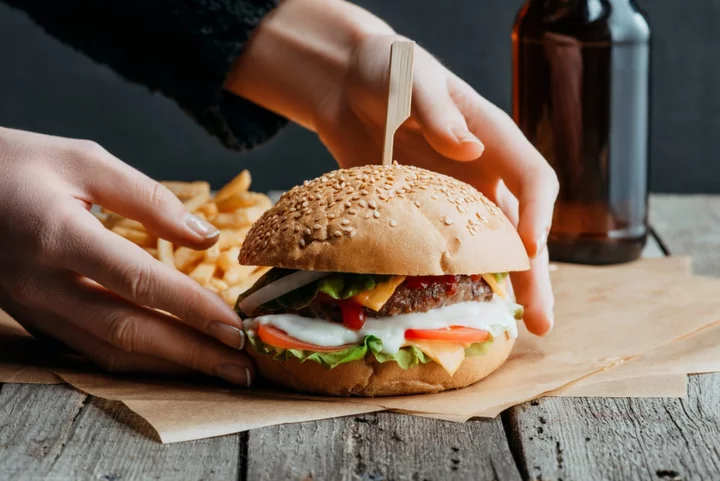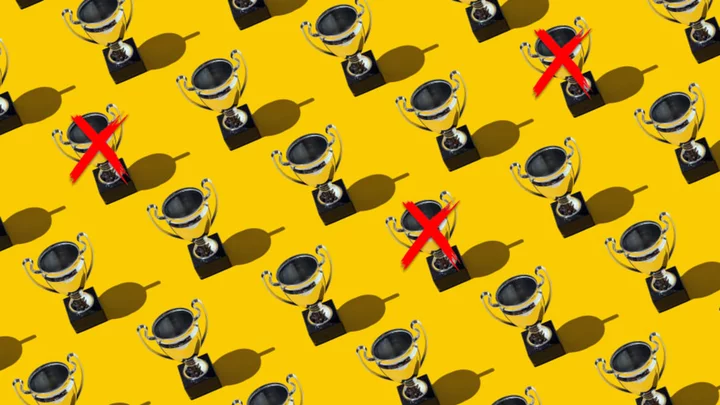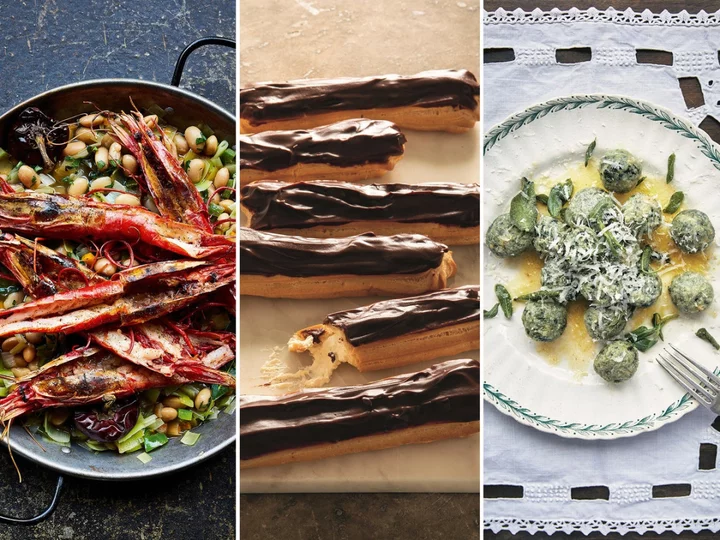
Fed up with catching colds? Here’s what your doctor really wants you to know
Already feel like you’ve had your fill of sore throats, coughs and stuffy heads this winter? Colds may be common and minor – but they can still leave you feeling rotten, not to mention being a major inconvenience. They aren’t really something you want to be traipsing to the GP surgery with either – but wouldn’t it be helpful to know what your doctor really thinks about managing winter ailments? We asked them… Getting ill is not always terrible Nobody enjoys having a cold, of course. But GP and TV medic Dr Hilary Jones – known for regular appearances on Good Morning Britain – says we can’t always “prevent exposure to viruses, especially in winter when people flock together for warmth indoors”. And if symptoms are mild, we probably don’t need to worry too much. “Let your own immune system deal with it,” says Jones. “That’s what your immune system is for – and looking on the positive side, the more you tickle up your immune system, the healthier it is. In a way, you’re stimulating your immune system to be healthy.” Antibiotics can be harmful if you don’t actually need them If symptoms are proving tougher to tolerate, it can be tempting to try antibiotics. But while there are certainly times when antibiotics are vital, they only work for bacterial infections, so taking them when you have a viral infection (such as a cold) is not only futile, but could cause harm. “Often, both clinicians and patients will be tempted to try antibiotics, even when there is little-to-no chance of them helping – ‘just in case’ and often accompanied with the reasoning of ‘what harm can it do?’,” says Dr Tom Jenkins, GP and developer of Centoreze Pelargonium. “We are now beginning to appreciate that there is potential harm at an individual level,” Jenkins adds. “There are more bacterial cells in the human body than human cells, and most of those bacterial cells are helpful and essential for healthy functioning. Because antibiotics are not selective and do not single out just bad bacteria, taking them upsets our bacterial microbiome, and we are now starting to learn about the subtle and sometimes lasting consequences of this.” Another major concern is bacteria becoming resistant to antibiotics – which the World Health Organisation (WHO) describes as one of the biggest threats to global health today. Tackling this is complex, but on an individual level, WHO guidelines suggest people only use antibiotics when suitable. Soothing home remedies are worth it Jones, who is working with Manuka Doctor, also points out: “If you do get sick, comforting symptomatic relief is really important, starting with the simple things. I’m an advocate of manuka honey – the genuine manuka honey from New Zealand, which carries a number for the antibacterial activity, the MGO methylglyoxal.” As well as its antibacterial properties, Jones says it’s “soothing for throats” and can provide an “energy boost” – plus his 97-year-old mother is a fan. “Not only does she put it in her porridge, she put it on her skin for a few lesions that she has – perfectly well-endorsed by the district nurse who comes to visit her as well. “You can also put honey in a grog, in hot water, with a bit of lemon, a bit of cinnamon – that’s something our grandmothers used to use, and to good effect.” The herbal remedy that’s doctor-approved There are so many natural remedies out there promising to fight off symptoms, and deciding between them can be overwhelming. But did you know there’s one herbal remedy that is recommended by the National Institute of Clinical Excellence (NICE) for managing certain upper respiratory tract symptoms? Pelargonium, licenced as a Traditional Herbal Remedy, is recommended by GPs to consider as one of four self-care treatment options for adults and children aged 12 and above. It’s mentioned on the NHS website’s page for coughs, too – along with getting plenty of rest, staying hydrated, Paracetamol and Ibuprofen where suitable for pain relief, and honey and lemon. Derived from plants found in South Africa and Lesotho, Pelargonium was widely used to help treat infections before antibiotics boomed. But “over the last quarter of a century”, Jenkins says , “clinical research has begun to revisit this forgotten treatment, especially in Germany, and now more recently here in the UK too.” This has “resulted in the publication of over 70 peer reviewed pre-clinical and clinical studies supporting its effect”, says Jenkins. He explains it contains “a large number of biological molecules” that work in a number of ways to “stimulate the body’s immune system to fight infections”. Diet and lifestyle do play a part “Diet is always important,” says Jones. “A healthy lifestyle does protect us and helps our immune system. Clearly there are obvious things not to do – smoking and excess alcohol – as well as poor nutrition. “We know vitamin D is important for good immune health, and there are many people who are deficient in vitamin D, who should be taking a supplement as recommended by the WHO and NHS, particularly through winter,” Jones adds (when there isn’t enough sunlight in this part of the world for our bodies to make sufficient amounts). “So vitamin D, adequate vitamin C, zinc, and sometimes things like garlic and echinacea can be helpful in making sure your immune system is healthy.” While a balanced diet comes first, Jones believes “it’s always worth considering a multivitamin, which gives you a little bit of everything, particularly if your diet is restricted or selective in any way or if you’ve got extra needs”, he adds. “But healthy eating, plenty of fruit and vegetables, adequate protein, exercising moderately and avoiding pollutants and cigarettes – those are the main things.” Check in with your doctor if you’re constantly rundown Still feel like nothing seems to help? Then it may be time to check in with your doctor. “If you’re concerned that you have any possible underlying medical problem, I would always advise discussing matters with your GP,” says Jenkins.“Sometimes recurrent infections can be a sign of an underlying infection, but sometimes they can be because you are rundown. Your GP is ideally placed here because they have your medical record, are able to look into things in more detail, and can follow you up.”
2023-11-22 17:52

Mayo slander doesn’t make you a foodie – it makes you boring
As if to prove a point, I am sitting in front of my computer, typing with one hand and dipping chicken nuggets into mayonnaise with the other. Admittedly, it’s not even the good stuff – it’s M&S-branded mayonnaise, which is fine but certainly no substitute for a delicious Hellman’s. But to me, all mayonnaise, even not-very-good-mayonnaise, is the good stuff. This might come as a surprise. As a food writer, I’m often expected to rise above the simple condiments. The circles I run in, usually full of food lovers and taste-makers, tend to decry mayonnaise, which pains me. “God, I hate mayo,” some of them proclaim. This happened to me not long ago while getting chips at Wetherspoons, as if we were even eating at some sort of paragon of British cuisine. “Mayonnaise is boring!” they shout. “It’s got no flavour! It looks gross!” I cringe because I was about to help myself to the squeezy bottle. I’ve often felt embarrassed by my love for this apparently bland condiment. When the people around me make announcements about the awfulness of mayonnaise, I wonder if my reputation as a gastronome will be tarnished by the sizeable dollop I like to add to the side of my plate. But I’ve noticed a pattern of late, and it’s time to address it: the people who shout obnoxiously about hating mayonnaise are usually white people who are self-described “foodies”, which is perhaps one of the cringiest words of the 21st century. And I’ve had it. I think it’s self-loathing, really. The same white people who decry mayonnaise see themselves in its milky complexion and feel the need to prove that they are different – exotic, even. Maybe it’s even a way of distancing themselves from the proverbial sins of their fathers. But mayo slander won’t give you a blank slate to reinvent yourself. In fact, it’s been unfairly vilified as plain and dull for too long. It’s one of the UK’s favourite condiments – second only to ketchup – for good reason, and has far more potential than we give it credit for. How do I love thee, mayonnaise? Let me count the ways. Firstly, the way it’s made is pure magic. Eggs? Oil? White vinegar? Lemon? As they are, they don’t really make any sense. But blending them somehow creates a smooth, thick, creamy emulsion. Who on earth discovered this? There are numerous legends about how mayonnaise was first invented; some food historians say it was the French, others point to the Spanish. The sauce can be traced back to 1756, and has gone through many iterations before arriving as the eggy, almost jelly-like substance we know today. The other thing I love about mayonnaise is how versatile it is. You can mix it with just about anything – this is something Heinz does with abandon, selling varieties like Mayomust (mayo and mustard) and Mayocue (mayo and barbecue sauce). I draw the line at some of the brand’s more Frankenstein-esque creations – monstrosities such as Creme Egg mayo and hot cross bun mayo. Some things are better left alone. But mayonnaise mixed with other savoury condiments is revelatory, one of my favourites being sriracha mayo. I would highly recommend making your own mixes, as this lets you decide on a ratio that works for you and means you won’t have to stoop so low as to buy anything labelled “Mayoracha”. Mayonnaise also has far more uses than just dipping. You could mix it with ketchup to make a thousand island dressing for salad (although maybe don’t check any calorie counts if you do this… I certainly don’t). One of the best tips I’ve ever been given is to spread a thin layer of mayonnaise instead of butter over the outside of your cheese toasties before grilling them – the fat in the mayonnaise and its uber-spreadable texture will help you achieve an even browning all over the bread. It has non-food uses, too. You can use mayonnaise, for example, to marinade chicken, which yields tender, juicy meat with loads of flavour. Finally, trying different types of mayonnaise from other countries has been quite an adventure for me. Japanese mayonnaise – my utmost favourite – is tangier due to the use of rice vinegar, as well as more unctuous in texture than regular mayonnaise. I squeeze squiggles of it over scrambled eggs, freshly steamed rice, fried chicken, anything. Dutch mayonnaise is richer and more flavourful, which makes dipping chips into it feel quite luxurious. While I have yet to try Russian mayonnaise, I imagine it is just wonderful, considering Russia is the only market in Europe that sells more mayonnaise than ketchup. My love for mayonnaise knows no bounds. Well, there are some bounds; I wouldn’t choose to emulate Kingsman star Taron Egerton, who once told the Off Menu podcast he spreads mayonnaise on his pizza like butter on a slice of bread. That’s taking things a bit too far. And I won’t touch any sweet mayonnaise atrocities. But I urge anyone who’s ever uttered the words “I hate mayonnaise” to give it another chance. Especially if you’re white. Reclaim your condiment! As for me, I’m done with being embarrassed about loving mayo. In fact, I’m off to buy more. Read More Best wines to pair with Thanksgiving dinner Three easy cranberry sauce recipes to try this Thanksgiving Vegetarian and vegan alternatives to classic Thanksgiving recipes
2023-11-22 14:48

Apollo Hit With $264 Million Suit Over Vegas Lounge Karaoke
Apollo Global Management Inc. and its Venetian Las Vegas were sued over accusations that they profited from a
2023-11-22 10:58

What Does the Phrase ‘Talk Turkey’ Mean—And Where Did it Come From?
Before you talk turkey this Thanksgiving, find out what we know about the phrase’s meaning and origins.
2023-11-21 22:25

8 World Records Too Dangerous for Guinness
The world's longest saxophone note is too risky to attempt. So is the world's longest kiss.
2023-11-21 21:21

Next 2 days likely to be this week's busiest. Here's when not to be on the road -- or in the airport
Millions of people are expected to hit airports and highways in record numbers over the Thanksgiving holiday
2023-11-21 21:17

Woman told exhaustion was just ‘A-level stress’ overcomes debilitating diagnosis
An 18-year-old was told her constant exhaustion was likely caused by depression and the stress of her A-levels – only to eventually be diagnosed with a debilitating chronic illness. Elizabeth Hope, from Cheltenham, Gloucestershire, experienced painful headaches and had begun falling asleep at 5pm every day while studying for her A-levels. “My mum would wake me for dinner and then I’d maybe do like an hour’s homework, which is absolutely not enough when you’re studying for your A-levels, and then fall asleep again,” the now-27-year-old recalls. When Hope said she needed to lie down during rehearsals for the school show and stopped going to cheerleading practice because she was too tired, her parents knew there was a serious problem. “To start off with, my parents thought ‘oh she just doesn’t want to go to school’,” she says. “But I started not being able to do the things that I enjoyed, so then we realised that something was very wrong.” She visited another doctor, who found Hope was experiencing myalgic encephalomyelitis, also known as chronic fatigue syndrome or ME, a long-term illness that affects the nervous and immune systems. People with ME can experience severe pain and fatigue, as well as a range of other symptoms, making everyday physical and mental tasks exhausting, according to the NHS. Hope was so exhausted that she struggled to leave the house without using a wheelchair. “I was literally stuck in my house,” she says. “We would maybe go out to one shop and then I would have to come home. Being able to use a wheelchair was amazing for me because I could go to two or three shops or go to the park and stuff like that.” A woman of 18 told by doctors that her constant exhaustion was likely depression and A-level exam stress, was diagnosed with a debilitating chronic illness which means she uses a wheelchair, but has overcome her adversity to become an award-winning wheelchair dancer and dancing instructor. “Struggling with loneliness,” she was “really unsure” when her mother suggested she attend a wheelchair dance class in Birmingham – but it turned out to be one of the best decisions she ever made. She learnt to manage her energy levels and “fell in love with dance”, and has since gone on to perform in her wheelchair at the 2022 Commonwealth Games opening ceremony and two cheerleading world championships. “I think for people with disabilities, it’s not like you can do whatever you want, because it’s not true, but you can do things in a different way,” she says. “But I love dancing and being able to share my passion with other people is just, yes, it’s really cool”. As a dancer, Hope was soon competing and joined another two dance groups, Sun Rae Inclusive Dance and Apt Dance Theatre. She went on to win the UK ParaDance National Championships with the group and came second in the solo contest after performing to Kylie Minogue’s 2018 song “Dancing”. She also found a cheerleading group and travelled to Florida in the US, where she went on to win the world championships in 2019, in the adaptive abilities category. In early 2022, Hope received a message from a friend suggesting that she apply for an assistant dance artist job with the national disability charity Sense. “They said you can apply with a cover letter and CV or via video,” she said. “So I basically made this video about how much I love dance.” To her surprise she was invited to attend a recruitment workshop. “I was like, that was fun, but I won’t get a job because all these people are way more qualified than me,” she said. “But then I got offered the job.” Hope was initially going to turn down the job because the working hours were more than she thought she could manage, but was told they would come up with a solution. She now teaches people with disabilities to dance, from non-verbal school groups to elderly people in care homes – including a 102-year-old. “It’s just about managing my energy and pain,” she says. “So for example, I rest a lot and only work one day a week. It’s just about pacing your activity more than anything else.” For more information on the accessible arts activities Sense offers, visit: sense.org.uk/our-services/arts-sports-activities-for-disabled-people/art-for-disabled-people/ Read More A$AP Rocky claims having a family with Rihanna is his ‘best’ collaboration Ashlyn Harris breaks silence on cheating rumours following Ali Krieger divorce I present my children on Instagram like a fairytale – I’m now rethinking A$AP Rocky claims having a family with Rihanna is his ‘best’ collaboration Ashlyn Harris breaks silence on cheating rumours following Ali Krieger divorce I present my children on Instagram like a fairytale – I’m now rethinking
2023-11-21 18:56

Three new cookbooks worth buying, from James Martin to the Hairy Bikers
This is the best time of year to discover new recipes. As the days get shorter and colder, a glossy new cookbook – and all the food-related inspiration that comes with it – can be just the thing you need. And there are plenty of new releases to sink your teeth into – whether you want to transport yourself to a sunnier country, settle down with some comfort food – or even get a head start on Christmas shopping. Some of the biggest names in food – including chef and former Saturday Kitchen presenter James Martin, BBC stalwarts the Hairy Bikers, and cult restaurateur Russell Norman – have new cookbooks out – and this is what you can expect from each of them. 1. ‘James Martin’s Spanish Adventure’ by James Martin If you were captivated by James Martin’s 20-part ITV series taking a culinary tour around Spain – from the Michelin-starred restaurants of San Sebastian to the local markets of Santiago de Compostela – you’ll want to pick up the accompanying cookbook. One of Martin’s favourite areas in the country is Toledo, “a special ancient city right in the middle of Spain”, he notes. “It’s famous for great produce including game, saffron, honey, olive oil, garlic and the list goes on.” Yorkshire-born Martin says he first fell in love with Spanish food when he came to London as a young chef, and wanted to dedicate this book to the cuisine because he “wanted people to know about the people, the fantastic variety of landscapes, and the spectacular produce available”, he says. “They have the best markets in Europe and the range of ingredients is fabulous – the seafood, the meat, the vegetables and the fruit.” In the cookbook, Martin highlights that Spanish cuisine is far more than just paella and sangria. There are plenty of recipes for traditional dishes – including tapas bites, croquetas, empanadas, Seville pork with patatas bravas and burnt Basque cheesecake – as well as classic Spanish ingredients (such as chorizo, olives and plenty of seafood). While Spain is predominantly known for meat and fish, Martin also shows some of the beautiful ways the country uses vegetables too – such as a dish for deep-fried aubergines drizzled with honey and served with a tomato sauce, and salt-baked celeriac with new potatoes and salsa. Valencia beans and red prawns “Located on the east coast, the 2,000-year-old city of Valencia boasts wide sandy beaches, striking architecture, a buzzing food scene and culture,” says Martin. “It has its own language (a dialect of Catalan) and unique cuisine, with a focus on rice, seafood and meat. This dish showcases red prawns on a bed of white beans and vegetables.” Serves: 2 Ingredients: 75ml olive oil, plus extra for drizzling 2 garlic cloves, chopped 1 onion, diced ¼ leek, diced ½ carrot, peeled and diced ¼ green pepper, cored, deseeded and diced 3 bay leaves 2 whole smoked chilli peppers (or a pinch of chilli flakes) 300g cooked butter beans Splash of white wine Small bunch of flat-leaf parsley, chopped 8 red prawns, split lengthways Sea salt Method: 1. If you want to use a BBQ, heat a BBQ until hot and the coals are white. 2. Heat a medium paella pan and, when hot, add the oil, then add the garlic, all the vegetables, the bay leaves and the smoked peppers. Cook for two to three minutes, then stir in the beans, 50 millilitres of water and the wine and cook for three to four minutes. Season with salt and finish with the parsley. 3. Meanwhile, pop the prawns onto the BBQ, drizzle with oil and season with salt, then cook for two to three minutes until charred, turning once or twice. Alternatively, grill on high for three to four minutes. 4. To serve, remove the smoked peppers (if using) from the beans and then pile the prawns on top of the beans and drizzle with extra olive oil if desired. ‘James Martin’s Spanish Adventure’ by James Martin (Quadrille, £27) 2. ‘The Hairy Bikers’ Ultimate Comfort Food’ by Si King and Dave Myers It’s hard to believe Dave Myers and Si King – otherwise known as the Hairy Bikers – have been on our screens for nearly two decades, with their first BBC show airing in 2004. They’ve written plenty of cookbooks over the years – dedicated to everything from Mediterranean food to curries – and their latest is all about comfort food. In the introduction, the duo think back to what comfort food meant to them growing up – for Myers, it’s a classic chip butty, and King picks out his mother’s curries and casseroles. British classics like these permeate the book – including beef and barley stew, sausage rolls and lemon drizzle cake – but there’s a definite international flavour, with dishes inspired by Myers and King’s travels all over the world. Think soba noodles with miso mushrooms, Szechuan lamb bao buns, chipotle prawn tacos and more. While comfort food might make you think of heavy, rich dishes you want to curl up in the winter with – and those recipes are represented – there’s also a wider picture of ‘comfort’ and what it means throughout the year. Lighter recipes such as the teriyaki chicken salad and Spanish-style roasted vegetables with halloumi will bring just as much joy in the summertime. Chocolate eclairs “Possibly everyone’s top teatime pleasure, eclairs are a bit of work, but are so worth it,” say Myers and King. “Just picture yourself biting into that beautiful choux pastry filled with cream and spread with chocolate.” Makes: about 8-12 Ingredients: For the choux pastry: 115g plain flour 100g butter 2 tsp caster sugar 1 tsp vanilla extract Pinch of salt 3 eggs, well beaten 1 tbsp icing sugar For the filling: 300ml double cream 1 tbsp icing sugar ½ tsp vanilla extract For the chocolate glaze: 100g dark chocolate (or 50g dark chocolate and 50g milk chocolate) 50g whipping cream 50g butter 25g golden syrup Method: 1. Preheat the oven to 180C/fan 160C/gas 4 and line two baking trays with baking parchment. Sift the flour on to another piece of baking parchment. 2. Put the butter, sugar, and vanilla extract in a pan with 225 millilitres of water and a generous pinch of salt. Heat gently until the butter has melted and the sugar has dissolved, then turn up the heat until the mixture is boiling. Remove the pan from the heat. 3. Pull up the sides of the baking parchment and slide the flour into the butter and sugar mixture. Stir the flour into the wet ingredients to form a thick paste which should come away from the sides of the pan in one solid mass. Put the pan back over a gentle heat and continue stirring with a wooden spoon for two or three minutes, until the mixture is slightly steaming and leaves a floury residue on the base of the pan. 4. Leave to cool for a couple of minutes, then beat for a couple of minutes more. You can then transfer the dough to a stand mixer or use electric beaters if you prefer. You will see steam escape from the dough at this point. Keep beating until the steam has subsided. 5. Gradually work in the eggs, just a couple of tablespoons at a time, until you have a thick glossy dough – it needs to be quite stiff and firm enough for you to draw your finger through it without the sides falling back in. The dough initially breaks up a lot, but eventually it will come together again. 6. Fit a large star or plain round nozzle into a piping bag and scoop the dough into the bag. If you don’t have a nozzle, simply snip off the end of the bag off – the hole should be about 2.5cm wide. 7. Pipe tiny amounts of the dough under the corners of the baking parchment on the trays to keep the parchment in place. For large eclairs, pipe eight lines of dough, as evenly as possible, on to the baking trays, making each one about 15cm long. To make sure they don’t spread to an oval shape, pipe them slightly wider at each end. To make slightly smaller eclairs, pipe 12 lines of about 10cm long. Wet your fingers and smooth out the ends of the eclairs if peaks have formed. If you haven’t used a star nozzle, run a fork along the length of each one. 8. Dust the eclairs with the icing sugar – this will help them darken and crisp up in the oven. Bake for 25 minutes by which time they should have formed a crust. Use a skewer to poke holes in each end of the eclairs so steam can escape from their centres, then continue to bake for another eight to 10 minutes. Turn the oven off and leave the door ajar. Leave the eclairs in the oven for about half an hour – this will help make sure they are crisp all the way through. 9. To make the filling, whip the cream until it is stiff, then fold in the icing sugar and vanilla extract. Chill for half an hour. 10. For the glaze, put the chocolate, cream, butter and golden syrup into a bowl over a saucepan of simmering water. Melt together gently to make a fairly thin ganache. 11. To fill the eclairs, cut three holes in the base of each one. Fill a piping bag with the cream and pipe it into the holes. Squeeze the eclairs lightly – they should feel nicely full. Dip each filled eclair in the chocolate glaze – this gives a much better coverage than trying to spread it – then leave them in the fridge to set. These are best eaten on the same day they are made as the pastry will eventually soften, but they will keep for up to 48 hours. ‘The Hairy Bikers: Ultimate Comfort Food’ by Si King and Dave Myers (Seven Dials, £25) 3. ‘Brutto’ by Russell Norman Russell Norman’s debut cookbook, Polpo, won the Inaugural Waterstones Book of the Year back in 2012, and anything the London restaurateur has done since has always been hotly anticipated. For his latest cookbook, Norman has turned his sights on Florence. Named after one of his London restaurants, “brutto” is the Italian word for ugly, and references the Italian expression, “brutto ma buono” – ugly but good. Tuscan cuisine is known for meat, offal, game and beans, Norman explains in the introduction – and these are all represented in the cookbook, albeit with a few more veggie options than you might seen in a traditional Florentine kitchen. You’ll learn a lot about food in Florence from Brutto – such as the city’s passion for wine bars, where antipasti such as coccoli (fried dough balls served with prosciutto and soft cheese) and deep-fried courgette flowers are served. Some of the recipes are Italian classics you’ll know about – such as tagliatelle with ragu and asparagus risotto – and others are more unusual, deeper dives into Italian cuisine – think Florentine-style fried chicken or an oven-baked spinach dish cooked with eggs, cream, Parmesan and a dash of nutmeg. Tuscan food is largely known as peasant food – meaning it’s relatively cheap and easy to make, while still being packed full of flavour. Spinach and ricotta dumplings “Gnudi translates as ‘naked’, as these little dumplings are the most nude and simple form of homemade pasta you can make,” says Norman. “The combination of spinach and ricotta is a very traditional marriage and appears in much of the pasta of the region, in ravioli and crespelle for example. It’s a very satisfying process, and easy enough for children to help with in the kitchen if you want to encourage an early interest in Italian cooking for little chefs.” Serves: 4 Ingredients: 500g baby spinach leaves, washed 50g ‘00’ flour 250g ricotta 1 large free-range egg, beaten 150g grated parmesan Flaky sea salt Black pepper ½ tsp freshly grated nutmeg 250g semolina 100g butter A large handful of sage leaves Method: 1. Steam the spinach for three minutes over a large pan of boiling water. Thoroughly drain and squeeze to remove the excess water, then chop the leaves finely. Set aside. 2. Mix the flour with the ricotta in a large bowl until it resembles lumpy breadcrumbs. Stir in the egg and two-thirds of the Parmesan. Add a pinch of salt, a twist of black pepper, the nutmeg and then add the spinach. Combine thoroughly with a wooden spoon or with your hands. 3. Put half the semolina into a bowl and shake the rest on to a baking sheet or a tray. Take small lumps of the flour, egg and spinach mixture and form them into small balls by rolling them between your palms, to the size of large olives. Turn each ball through the bowl of semolina, then place on the tray you’ve prepared with the rest of the semolina. When finished, you should have 24–30 little balls. 4. Fill a very large pan with water and bring to a rolling boil. Place the gnudi in the boiling water as quickly as possible, bringing it back to the boil on the highest heat, and continue to simmer for about three minutes. 5. Meanwhile, in a small saucepan over a medium heat, melt the butter and add the sage leaves. When it bubbles, reduce to a very low heat. This should take no more than two minutes, while the gnudi are cooking. 6. The gnudi will float to the surface when they are ready. Turn off the heat, remove them with a slotted spoon and drain the excess water on kitchen paper. Place on four warmed plates, pour the butter and sage over the top, then evenly distribute the remaining Parmesan. Add a flourish of black pepper. ‘Brutto’ by Russell Norman (Ebury Press, £32) Read More From a £22 bag of pasta to £28 sandwich – why do they cost so much? How to host a dinner party for under £2 per portion Pearly Cow, Margate, restaurant review: Go for the steak, but stay for the potatoes Three authentic Thai recipes to try at home What does Saturday Kitchen’s Matt Tebbutt cook at home? Three recipes that prove traditional Irish food is better than you think
2023-11-21 14:55

60 years after JFK's death, today's Kennedys choose other paths to public service
The 60th anniversary of President John F. Kennedy's assassination finds his family, and the country, at a moment many would not have imagined in JFK's lifetime
2023-11-21 13:29

Lions Gate’s ‘Hunger Games’ Leads Box Office With $44.6 Million
The Hunger Games: The Ballad of Songbirds & Snakes opened as the top film in US and Canadian
2023-11-21 07:56

The 25 Best Movie Sequels of All Time, According to Internet Voters
It's hard to nail the second movie in a series—here are 25 successes.
2023-11-21 07:27

A$AP Rocky says ‘making children’ with Rihanna is his ‘best’ collaboration
ASAP Rocky has gushed over his family with Rihanna, calling it the “best” collaboration of his career. On Friday 17 November, the 35-year-old rapper sat down with Complex during the launch of Puma’s new partnership with Formula One, in which A$AP Rocky served as creative director for the collection. When asked whether he and Rihanna will collaborate for a future Puma fashion collection, the “Praise The Lord” rapper pointed out that the proud parents have already done the most important collaboration ever. “If me and my lady was to collab what could we team up and just f***ing just smash and go crazy on?” he asked. “I think we do a real great job at collaborating and making children. I think that’s our best creation so far.” “Nothing is better than that out there, any design,” the “Sundress” singer continued. However, Rocky also gave a shout-out to “a ghost designer named God” who he said “shaped everything” for their family of four. “I mean we had a third designer come and help, a ghost designer named God, you know, and shaped everything and we had these beautiful angels. So that’s the best collaboration,” he said. While the couple have only collaborated on one song together, 2011’s “Cockiness (Love It) Remix”, Rihanna was featured in the music video for Rocky’s “DMB” in May 2022. His latest comments come as the couple - who have been dating since late 2020 - were in Las Vegas, Nevada, for the arrival of the F1 Las Vegas Grand Prix. In addition to Rihanna and Rocky, fellow star-studded attendees included Brad Pitt, Kylie Minogue, Paris Hilton, and David Beckham. Rocky, real name Rakim Mayers, was announced as creative director of Puma’s new partnership with F1 in October. The “F**kin’ Problems” rapper and the Fenty Beauty founder attended a pop-up event for the fashion collection on Friday in Las Vegas, where Rihanna wore a long leather coat, black pumps, and silver accessories. Meanwhile, Rocky was dressed in pieces from the collaboration, including neon-green Puma gloves and matching sneakers. The A-list couple secretly welcomed their second child together in August this year. According to TMZ, Rihanna gave birth to another baby boy on 3 August in Los Angeles. It was later revealed that they named their newborn son Riot Rose Mayers. Rihanna and Rocky previously welcomed their first son, RZA Athelston Mayers - named in tribute to Wu-Tang Clan leader RZA - in May 2022. This isn’t the first time the “No Limit” rapper has gushed over his family. Two months before she welcomed baby Riot Rose, Rocky referred to Rihanna as his “wife” during a concert in Cannes, France. While performing at the Spotify Beach concert for the 2023 Cannes Lions Festival, he took a moment to dedicate a song to his partner of three years. “I’d like to dedicate this song to my beautiful wife in the motherf***ing building! I love her!” Rocky said, before performing his 2022 track “DMB”. Meanwhile, a then-pregnant Rihanna watched him perform while dressed in a sheer, vintage Jean Paul Gaultier dress over a sequined bikini. Back in February, Rihanna confirmed she was pregnant for the second time during her Super Bowl halftime show performance. Read More Ashlyn Harris breaks silence on cheating rumours following Ali Krieger divorce I present my children on Instagram like a fairytale – I’m now rethinking Will an adaptogen a day keep the doctor away this winter?
2023-11-21 05:58
